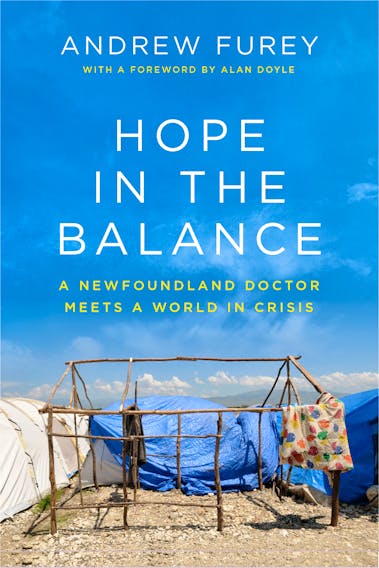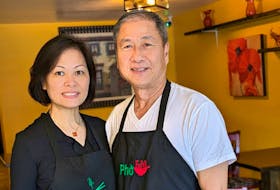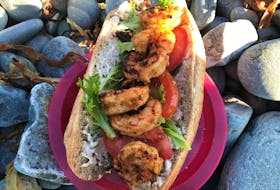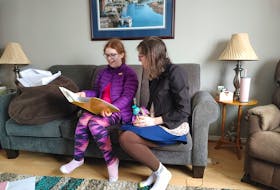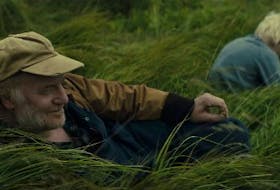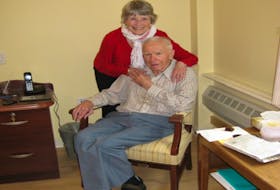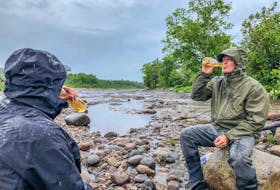Hope in the Balance: A Newfoundland Doctor Meets a World in Crisis
By Andrew Furey, with a foreword by Alan Doyle
Doubleday Canada
$32.95 288 pages
When a seven-magnitude earthquake struck Haiti on Jan. 12, 2010, the horrendous imagery poured onto the newspaper front pages and TV screens.
Death toll estimates climbed into the hundreds of thousands and the capital city of Port-au-Prince was in ruins.
Most of us were jolted, very possibly made some kind of donation, and then moved on.
Not Dr. Andrew Furey. He almost literally couldn’t move — watching the international news coverage.
“I felt like I weighed a thousand pounds,” he recalls in “Hope in the Balance: A Newfoundland Doctor Meets a World in Crisis.”
“The two sides of the family could not look more different … Mom’s side looks so dapper and crisp in their Sunday best. Sharp, fashionable, and somewhat timeless, the way you see photos from the fifties and think it could be last week. Dad’s side is in contrast for sure. It’s a mix of unbuttoned velvet suits, odd colours, my aunt Rose in a nun’s habit and dark-tinted glasses like something out of a movie from 1978.”
Haiti was not a place he was familiar with — when he first googled for information, he misspelled the country’s name three times. Distressed by the injuries, he knew, as a physician, the first casualties would be from head or abdominal injuries. But people would have broken bones, too. And, as an orthopedic surgeon, those he could fix.
Could he help? He’d need to get there, of course. And not alone, a team would be a necessity. And they’d need to marshal funding, supplies and contacts on the ground. Insurmountable odds.
So, he started climbing.
“Maybe I was a bit naïve at first,” he writes more than once.
But he found that, when he started talking about his idea, it quickly grew legs.
One conversation led to an offer to help. That volunteer linked to another. Those connections generated the beginnings of a network. And this was the foundation of Team Broken Earth.
Despite the enthusiasm and the planning, those first steps were taken into unknown territory.
As the plane takes off “there is no excitement. No anticipation of how we are going to help. Just anxiety and a whole lot of doubt. From my bag, I take out a manual about how to react if you are kidnapped. Yeah. That was a mistake.”
Furey describes that first trip to Haiti with both a detailed immediacy and an awareness that it was too much to absorb. Medical procedures and doctor/patient encounters are set against a backdrop of too much hurt, too much violence and too much wreckage.

But even as that first week ended, he was thinking of another trip.
Furey is often asked, and sometimes seems to question himself, as to why he did this.
As part of his answer he evokes his remarkable family story, which is complex and vital and which he neatly encapsulates within with the wedding photos of his parents — Sen. George and Karen née Bennidict.
“The two sides of the family could not look more different … Mom’s side looks so dapper and crisp in their Sunday best. Sharp, fashionable, and somewhat timeless, the way you see photos from the fifties and think it could be last week. Dad’s side is in contrast for sure. It’s a mix of unbuttoned velvet suits, odd colours, my aunt Rose in a nun’s habit and dark-tinted glasses like something out of a movie from 1978.”
The Bennidicts were St. John’s merchants, running a grocery store with forays into politics and public service.
The Fureys were from Avondale, where various businesses prospered, but the circumstances at home were so dire that on an autumn day in the 1950s, Nanny Furey (née Bruce) “took her eight children, ranging in age from infancy to teens, and fled into the night.”
The three girls went to Belvedere orphanage, and the five boys to Mount Cashel.
The youngest child, Chuck, was two young for the boy’s orphanage, so their mother arranged to work in domestic service for the Christian Brothers, recompense for which included her own apartment, so she could keep the littlest one with her, be close to the boys and visit the girls on weekends.
Furey frequently references this courageous and, for its time, unconventional, to say the least, action.
His attitude towards tests and barriers is “leap and a net will appear.” (Another family lesson is: “Curiosity is better than ambition.” He never stops learning, and for example recently enrolled in a diploma program at Oxford to hone his leadership skills.)
One thing that I didn’t expect to read about was how often he was asked, and how often he asked himself, if what he was doing was really helping. He introduces (to me at least) to the term “medical tourism,” the idea that touchdowns in theatres of crisis can be seen as indulgent because they make a few professionals feel good while providing little sustainable aid to people on the ground.
Furey presents Team Broken Earth, which has now expanded to Bangladesh and Ethiopia, as the opposite of that: committed to education, infrastructure and legacy.
Still, from the opening words (“My hands hold the bleeding artery of a patient on an operating table and I can’t see anything.”) Furey makes this book about the people — those who heed trouble, those who suffer, those who endure and thrive and problem-solve and those who hope.
Joan Sullivan is editor of Newfoundland Quarterly magazine. She reviews both fiction and non-fiction for The Telegram.

